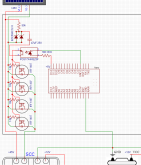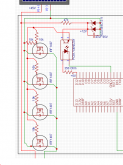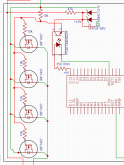I've been working on a DIY mobile all-in-one solar generator system since some time.
Must of the hardware has gone into the enclosure and is functional in a very basic sense.
However, integrating multiple generic modules to work together seems more like a Frankenstein's blueprint.
While I am not from Electrical/ Electronics background, but with support from ever helpful forum members planning to substitute
all for a single control board.How and what all gets added remains to be seen as this thing progresses but for starters Idea is to have:
1) Ability to Isolate PV panels from SCC. This is helpful for following reasons:
a) My SCC fuses out from PV current in case batteries are not already in place.
PV panels isolated by default ensure that they are allowed to attach and charge the system only when it is ready to do so.
b) Disconnecting PV panels when system is inactive/ batteries are already charged - may reduce component stress/wear arising
from surplus bypass current.
c) PV Panel switching could be utilized to for better control over battery charging characteristics - my SCC does not offer variable charging
parameters for Lithium.
Regards
Must of the hardware has gone into the enclosure and is functional in a very basic sense.
However, integrating multiple generic modules to work together seems more like a Frankenstein's blueprint.
While I am not from Electrical/ Electronics background, but with support from ever helpful forum members planning to substitute
all for a single control board.How and what all gets added remains to be seen as this thing progresses but for starters Idea is to have:
1) Ability to Isolate PV panels from SCC. This is helpful for following reasons:
a) My SCC fuses out from PV current in case batteries are not already in place.
PV panels isolated by default ensure that they are allowed to attach and charge the system only when it is ready to do so.
b) Disconnecting PV panels when system is inactive/ batteries are already charged - may reduce component stress/wear arising
from surplus bypass current.
c) PV Panel switching could be utilized to for better control over battery charging characteristics - my SCC does not offer variable charging
parameters for Lithium.
Regards
Last edited:





